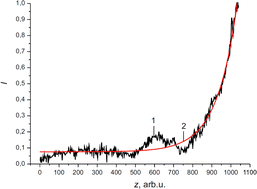Properties of liquid-crystal wave-guiding structures
Abstract
The paper presents the results of an experimental and numerical study of some properties of multimode liquid crystal waveguide structures. The nematic 4-cyano-4′-pentylbiphenyl (5CB) was used as a liquid crystal. A description of the experiments performed and some of the techniques used are given. Scattering diagrams are presented that characterize the features of propagation in a multimode liquid-crystal waveguide of one and many modes. It is shown that when an external repetitively pulsed electric field is switched on, the attenuation and size of inhomogeneities decrease. To explain this effect, the classical theory of liquid crystal director fluctuations is used. For the first time some properties of a liquid-crystal waveguide are described with explicit allowance for the two-dimensional Frederiks model. The two-dimensional nature of the liquid crystal director reorientation effects in our case (including under the action of an electric impulse-periodic field) required the involvement of the three-dimensional theory of light scattering in an LC waveguide and, as a consequence, the study of two-dimensional scattering diagrams in experiments, which make it possible to consider the two-dimensional nature of the behavior of the LC director. The relevance and importance of such studies are related both to the practical use and prospects of using liquid crystal materials in various high-speed and low-energy integrated-optical devices, for example, in communication elements, modulators, and sensors.



 Please wait while we load your content...
Please wait while we load your content...